
Overview
The health care and social assistance industry encompasses a vast and crucial sector focused on promoting and maintaining the well-being of individuals and communities. Comprising a diverse range of services, this industry includes medical care providers such as hospitals, clinics, and physicians, as well as social assistance organizations addressing broader societal needs. It plays a fundamental role in delivering preventive, diagnostic, therapeutic, and supportive services, spanning from primary care to specialized treatments. Beyond medical interventions, social assistance services address factors affecting overall health, such as housing, nutrition, and mental health support. The industry is characterized by its multidisciplinary nature, involving healthcare professionals, social workers, and various support staff working collaboratively to enhance the quality of life and health outcomes for individuals across diverse demographic groups.
Depending on specific features and functions, GAO Tek’s Flaw Detectors are sometimes referred to as defect detectors, fault finders, imperfection analysers, quality control devices, non-destructive testing (NDT) equipment, anomaly detectors, material inspection tools, flaw inspection devices, crack detection equipment, surface irregularity scanners, material integrity testers, structural health monitoring devices, deficiency scanners, flaw mapping instruments, non-invasive inspection tools, quality assurance devices, material anomaly detectors, non-destructive evaluation (NDE) equipment, material quality analyzers, and structural integrity assessment tools.
Furthermore, GAO Tek’s flaw detectors are further grouped into:
Alarm Integrated, Auto Calibrated, Benchtop, Concrete, Handheld, High Precision, Transducer Calibrated, and Ultrasonic
GAO Tek’s Flaw Detectors have the following applications in the healthcare and social assistance industry:
- Medical Imaging Equipment Inspection: GAO’s flaw detectors can be used to assess the integrity and detect flaws in medical imaging devices such as X-ray machines, ultrasound equipment, and MRI scanners to ensure accurate diagnostic capabilities.
- Prosthetic and Orthotic Device Inspection: GAO Tek’s flaw detectors can be employed to assess the structural integrity of prosthetic limbs and orthotic devices, ensuring their safety and functionality.
- Hospital Infrastructure Inspection: GAO’s flaw detectors can be used to assess the structural integrity of hospital buildings and facilities, ensuring that they meet safety standards and can withstand environmental stresses.
- Patient Bed and Furniture Inspection: Regular inspections using GAO Tek’s flaw detectors can identify potential issues with patient beds, chairs, and other furniture to prevent accidents and ensure the comfort and safety of patients.
- Medical Gas System Inspection: Detecting flaws using GAO Tek’s flaw detectors in the pipelines and components of medical gas systems to ensure the safe and reliable delivery of gases critical for patient care.
- Assistive Technology Assessment: GAO’s flaw detectors can be used to assess the structural integrity of assistive technologies, such as mobility aids and communication devices, ensuring their reliability and safety for users.
- Medical Waste Container Inspection: Regular inspections of containers used for medical waste to identify potential flaws and ensure the safe containment and disposal of biohazardous materials using GAO’s flaw detectors.
- Patient Monitoring Device Inspection: GAO’s flaw detectors can be used to verify the integrity of patient monitoring devices, such as heart rate monitors and blood pressure cuffs, to ensure accurate and reliable health monitoring.
- Ambulance and Emergency Response Equipment: GAO Tek’s Flaw detectors can be used to assess the structural integrity of ambulance vehicles and emergency response equipment to ensure their readiness and reliability during critical situations.
- Rehabilitation Equipment Inspection: Assessing the structural soundness of rehabilitation equipment using GAO Tek’s flaw detectors, such as physical therapy devices and exercise machines, to ensure the safety and effectiveness of rehabilitation programs.
- Safety Equipment Inspection: GAO’s flaw detectors can be applied to safety equipment such as fire extinguishers, emergency exits, and safety rails to ensure they are structurally sound and meet regulatory standards.
- Medical Facility HVAC Systems: Regular inspection of heating, ventilation, and air conditioning (HVAC) systems in medical facilities using GAO Tek’s flaw detectors to identify potential issues and maintain a comfortable and healthy environment for patients and staff.
More information on flaw detectors and their applications in other industries can be found on
This category page lists related products
Systems in the Health Care and Social Assistance Industry Utilizing Flaw Detectors
Here are some popular systems in the health care and social assistance industry using flaw detectors:
Health Monitoring System:
- HealthCheck Pro Software: HealthCheck Pro Software is designed to complement health monitoring systems in the healthcare and social assistance industry. It offers comprehensive analysis and visualization tools for tracking patient data, vital signs, and medical history. With real-time monitoring and customizable alerts, it enhances patient care and facilitates early detection of health issues.
- CareLink Connect App: The CareLink Connect App integrates seamlessly with health monitoring systems, enabling remote access to patient data and facilitating communication between healthcare providers and patients. It offers secure messaging, appointment scheduling, and medication reminders, enhancing care coordination and patient engagement.
Medical Imaging System:
- DICOM Viewer Pro: DICOM Viewer Pro is a powerful medical imaging software that complements medical imaging systems in healthcare and social assistance facilities. It allows healthcare professionals to view, analyze, and annotate medical images with high precision. With advanced visualization tools and multi-modality support, it enhances diagnostic accuracy and clinical decision-making.
- ImageJ Software: ImageJ Software is an open-source image processing and analysis tool widely used in medical imaging applications. It offers a range of plugins and algorithms for image enhancement, segmentation, and quantification. With its versatility and customizable features, it supports research, education, and clinical workflows in healthcare settings.
Patient Management System:
- Epic EHR Software: Epic EHR Software is a comprehensive electronic health record (EHR) system that integrates seamlessly with patient management systems in healthcare organizations. It streamlines administrative tasks, clinical documentation, and care coordination processes. With its interoperability and scalability, it enhances operational efficiency and patient care delivery.
- Cerner Millennium Software: Cerner Millennium Software is a leading healthcare information technology solution that supports patient management and clinical workflows in healthcare facilities. It offers a unified platform for electronic health records, decision support, and population health management. With its modular design and analytics capabilities, it enables data-driven insights and quality improvement initiatives.
Telehealth System:
- Zoom for Healthcare: Zoom for Healthcare is a secure telehealth platform that complements telehealth systems in healthcare and social assistance organizations. It offers encrypted video conferencing, virtual consultations, and remote monitoring capabilities. With its user-friendly interface and HIPAA compliance, it enables seamless virtual care delivery and patient engagement.
- Doxy.me: Doxy.me is a simple and intuitive telemedicine solution that connects healthcare providers with patients through secure video calls. It integrates with telehealth systems to facilitate virtual appointments, patient education, and telemonitoring. With its accessibility and telehealth reimbursement support, it expands access to care and improves patient outcomes.
Electronic Prescription System:
- Surescripts E-Prescribing Software: Surescripts E-Prescribing Software is a leading electronic prescription solution that enhances medication management in healthcare settings. It integrates with electronic health record systems to enable secure transmission of prescriptions, medication history access, and formulary checks. With its interoperability and medication adherence support, it improves patient safety and prescription accuracy.
- DrFirst Rcopia: DrFirst Rcopia is a comprehensive e-prescribing platform designed to streamline medication management and prescription workflows. It offers features such as drug interaction checking, medication history review, and electronic prior authorization. With its intuitive interface and regulatory compliance, it enhances medication safety and prescription efficiency.
GAO Tek’s targeted markets are North America, particularly the U.S. and Canada.
Complying with Government Regulations
GAO Tek’s flaw detectors comply or help our customers comply with the U.S. government regulations such as:
- Occupational Safety and Health Administration (OSHA) regulations
- Food and Drug Administration (FDA) guidelines
- Environmental Protection Agency (EPA) regulations
- Centers for Medicare & Medicaid Services (CMS) standards
- National Institute for Occupational Safety and Health (NIOSH) recommendations
- Health Insurance Portability and Accountability Act (HIPAA) regulations
- Clinical Laboratory Improvement Amendments (CLIA) requirements
- Joint Commission accreditation standards
- American National Standards Institute (ANSI) guidelines
- National Fire Protection Association (NFPA) regulations
GAO Tek’s flaw detectors comply or help our clients comply with the Canadian regulations such as:
- Canadian Health and Safety Regulations for Medical Devices
- Canadian Medical Devices Regulations (CMDR)
- Canadian Standards Association (CSA) Guidelines for Medical Equipment
- Health Canada Regulations for Diagnostic Devices
- Health Canada Safety Guidelines for Healthcare Facilities
- Occupational Health and Safety Regulations for Medical Equipment
- Health Canada Regulations for Non-Destructive Testing Equipment
- Workplace Hazardous Materials Information System (WHMIS) Regulations
- Canadian Standards Association (CSA) Standards for Healthcare Equipment
- Health Canada Regulations for Medical Device Testing
Case Studies of Flaw Detectors in the Health Care and Social Assistance Industry
Flaw detectors are sometimes called defect detectors, fault finders, imperfection analysers, quality control devices, non-destructive testing (NDT) equipment, anomaly detectors, material inspection tools, flaw inspection devices, crack detection equipment, surface irregularity scanners, material integrity testers, structural health monitoring devices, deficiency scanners, flaw mapping instruments, non-invasive inspection tools, quality assurance devices, material anomaly detectors, non-destructive evaluation (NDE) equipment, material quality analysers, and structural integrity assessment tools.
Here are some practical examples of using flaw detectors in the health care and social assistance industry:
In Boston, a renowned medical institution has implemented an advanced patient health monitoring system that metaphorically acts as a flaw detector for early detection of health issues. This system integrates real-time data from wearable devices, medical sensors, and electronic health records to provide clinicians with a comprehensive view of patients’ health. By leveraging advanced analytics and machine learning, healthcare professionals can identify potential health risks and intervene proactively, ultimately improving patient outcomes and reducing the burden on the healthcare system.
In Boston, a renowned medical institution has implemented an advanced patient health monitoring system that metaphorically acts as a flaw detector for early detection of health issues. This system integrates real-time data from wearable devices, medical sensors, and electronic health records to provide clinicians with a comprehensive view of patients’ health. By leveraging advanced analytics and machine learning, healthcare professionals can identify potential health risks and intervene proactively, ultimately improving patient outcomes and reducing the burden on the healthcare system.
A Minneapolis-based health agency pioneered a community health surveillance program leveraging data analysis techniques analogous to flaw detection. By systematically analysing health data from diverse sources, including hospitals, clinics, and social assistance programs, the agency identified trends and potential health disparities within the community. This innovative approach allowed for targeted interventions and resource allocation, ultimately improving the effectiveness of social assistance initiatives and healthcare delivery in the region.
Focused on extending healthcare services to underserved populations, a healthcare provider in Detroit implemented a remote patient monitoring system. Functioning akin to flaw detectors, this technology allowed healthcare professionals to remotely monitor patients’ vital signs and health metrics. The system facilitated early detection of health issues, enabling timely interventions and reducing the need for frequent in-person visits, particularly beneficial for patients with limited access to healthcare facilities.
Concerned about environmental factors affecting public health, a healthcare agency in Houston implemented a comprehensive environmental health monitoring system. This initiative utilized advanced sensors like flaw detectors to assess air and water quality in different neighbourhoods. Real-time data collection allowed for prompt identification of potential health risks, enabling targeted interventions to improve environmental conditions and, consequently, community health outcomes.
Recognizing the importance of patient safety, a healthcare system in Orlando initiated a patient safety program incorporating advanced monitoring technologies. Analogous to flaw detectors, these monitoring systems continuously tracked patients’ vital signs, providing healthcare professionals with real-time data and early warning indicators. The implementation of such systems resulted in improved patient outcomes, reduced adverse events, and enhanced overall safety in healthcare facilities across the region.
A mental health facility in San Francisco implemented an innovative mental health screening program, utilizing advanced screening tools like flaw detectors. The program incorporated sophisticated assessments to detect potential mental health issues early on. By leveraging technology and data analytics, the facility was able to improve the accuracy of mental health assessments and enhance the overall quality of care for individuals seeking support in the region.
To enhance the quality of healthcare data across Canada, a government health agency in Ottawa spearheaded a national initiative. Analogous to flaw detection in manufacturing, this program employed advanced data analysis techniques to identify and rectify discrepancies in healthcare records. The initiative aimed to improve the accuracy and completeness of patient information, contributing to better-informed healthcare decisions and enhanced patient care on a national scale.
Addressing the challenge of providing healthcare in remote areas, a healthcare organization in rural Alberta implemented a remote patient monitoring system. Functioning similarly to flaw detectors, this system allowed healthcare professionals to monitor patients’ vital signs and health metrics remotely. The technology facilitated early detection of health issues, enabling timely interventions and reducing the need for patients to travel long distances for in-person medical visits.
GAO RFID Inc. RFID Hardware, a sister company of GAO Tek Inc., is ranked as a top 10 RFID supplier in the world. Its RFID, BLE, and IoT products have also been widely used in the health care and social assistance industry. Articles about related industries are given below:
Use of Flaw Detectors with Leading Software and Cloud Services in the Health Care and Social Assistance Industry
GAO Tek has used or has facilitated its customers to use GAO’s flaw detectors with some of the leading software and cloud services in their applications. Examples of such leading software and cloud services include:
- Epic
- Cerner
- Allscripts
- Athenahealth
- Philips Healthcare
- Medtronic Care Management Services
- Vivify Health
- Redox
- CommonWell Health Alliance
- Health Gorilla
- Tableau
- Microsoft Power BI
- Qlik
- IBM Watson Health
- Elsevier’s ClinicalKey
- UpToDate
- Arcadia
- Innovaccer
- Health Catalyst
- Amazon Web Services (AWS)
- AWS Health
- Amazon Comprehend Medical
- Microsoft Azure Healthcare Services
- Azure API for FHIR
- Azure Health Bot
GAO Tek’s flaw detectors and their applications in other industries are listed on
Other related products can be found on
Meeting Customers’ Demands
Large Choice of Products
In order to satisfy the diversified needs of their corporate customers, GAO Tek Inc. and its sister company GAO RFID Inc. together offer a wide choice of testing and measurement devices, network products, RFID, BLE, IoT, and drones.
Fast Delivery
To shorten the delivery to our customers, GAO has maintained a large stock of its products and is able to ship overnight within the continental U.S. and Canada from the nearest warehouse.
Local to Our Customers
We are located in both the U.S. and Canada. We travel to customers’ premises if necessary. Hence, we provide a very strong local support to our customers in North America, particularly the U.S. and Canada.
Furthermore, we have built partnerships with some integrators, consulting firms and other service providers in different cities to further strengthen our services. Here are some of the service providers in the health care and social assistance industry we have worked with to serve our joint customers:
- Cerner Corporation
- Epic Systems Corporation
- McKesson Corporation
- Allscripts Healthcare Solutions
- Athenahealth
- Meditech
- Optum, a part of UnitedHealth Group
- IBM Watson Health
- Siemens Healthineers
- Philips Healthcare
- Deloitte
- Accenture
- Cognizant
- Wipro Limited
- Capgemini
- Infosys
- Tata Consultancy Services (TCS)
- DXC Technology
- NTT DATA Services
- Leidos
- TELUS Health Solutions
- Gevity Consulting Inc.
- CGI Group
GAO has Many Customers in the Health Care and Social Assistance Industry
The products from both GAO Tek Inc. and GAO RFID Inc. have been widely used in the health care and social assistance industry by many customers, including some leading companies. Here is more information on applications of GAO RFID Inc.’s products in the health care and social assistance industry. Articles about related industries are given below:
Here are some of GAO’s customers in the health care and social assistance industry:
- Johns Hopkins Medicine
- Mount Sinai Health System
- University of Pennsylvania Health System
- Mayo Clinic
- University of Chicago Medicine
- Northwestern Medicine
- OSF HealthCare
- Advocate Aurora Health
- Cincinnati Children’s Hospital Medical Center
- MD Anderson Cancer Center
- HCA Healthcare
- Ochsner Health System
- Memorial Hermann Health System
- Providence Health & Services
- Vancouver General Hospital
- Sunnybrook Health Sciences Centre
- Alberta Health Services
- Joseph’s Healthcare Hamilton
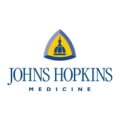
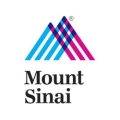

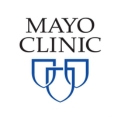
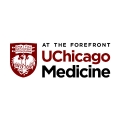
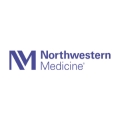
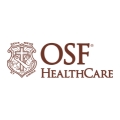
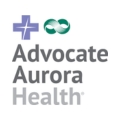





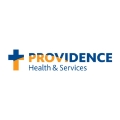
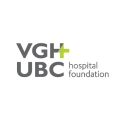
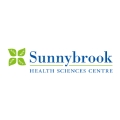


Contact Us
Here are GAO Tek’s Flaw Detectors, and they are further organized by feature:
Alarm Integrated, Auto Calibrated, Benchtop, Concrete, Handheld, High Precision, Transducer Calibrated, and Ultrasonic
If you have any questions about our products or want to place an order, our technical experts can help you.
Please fill out this form or email us
